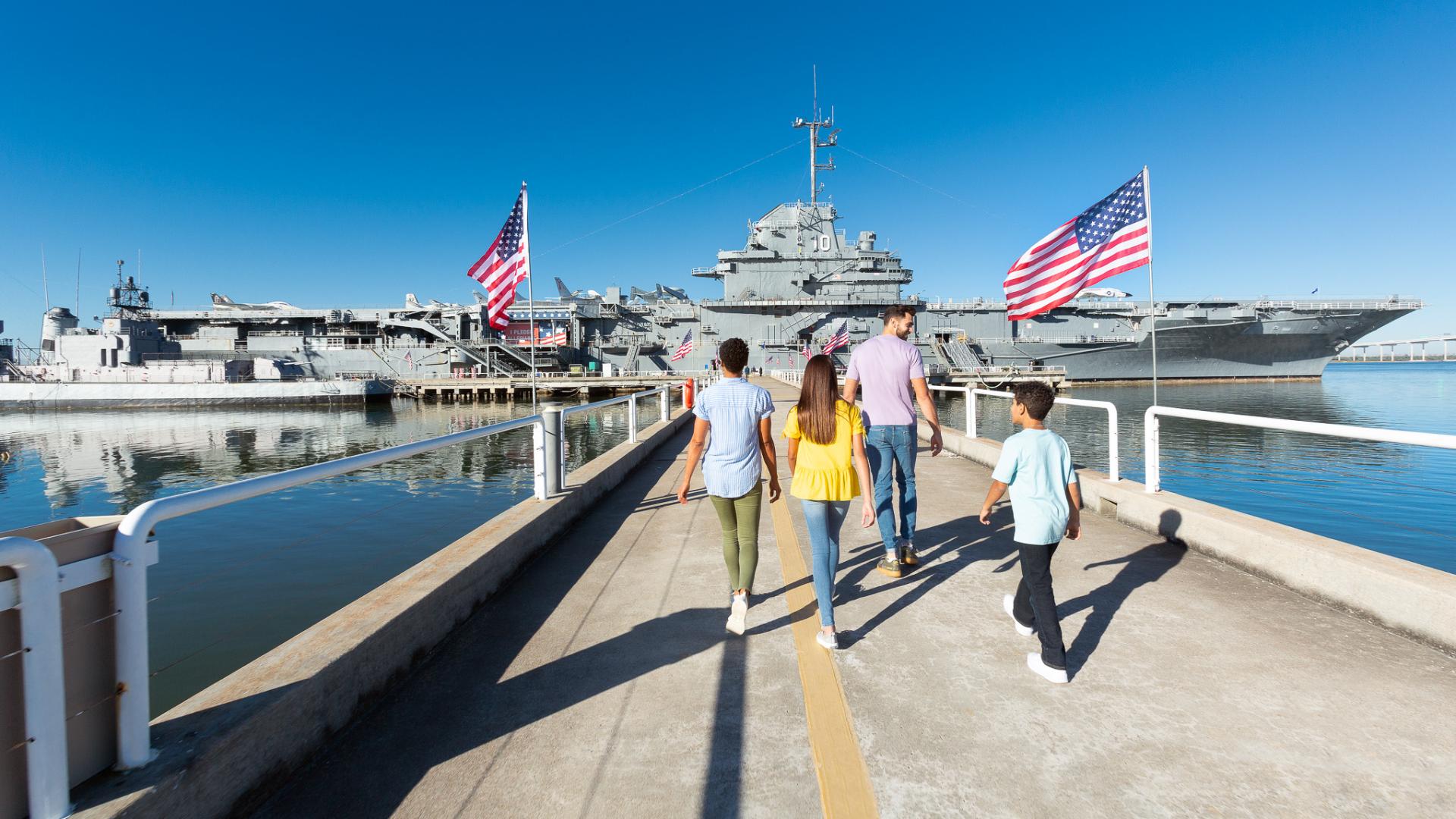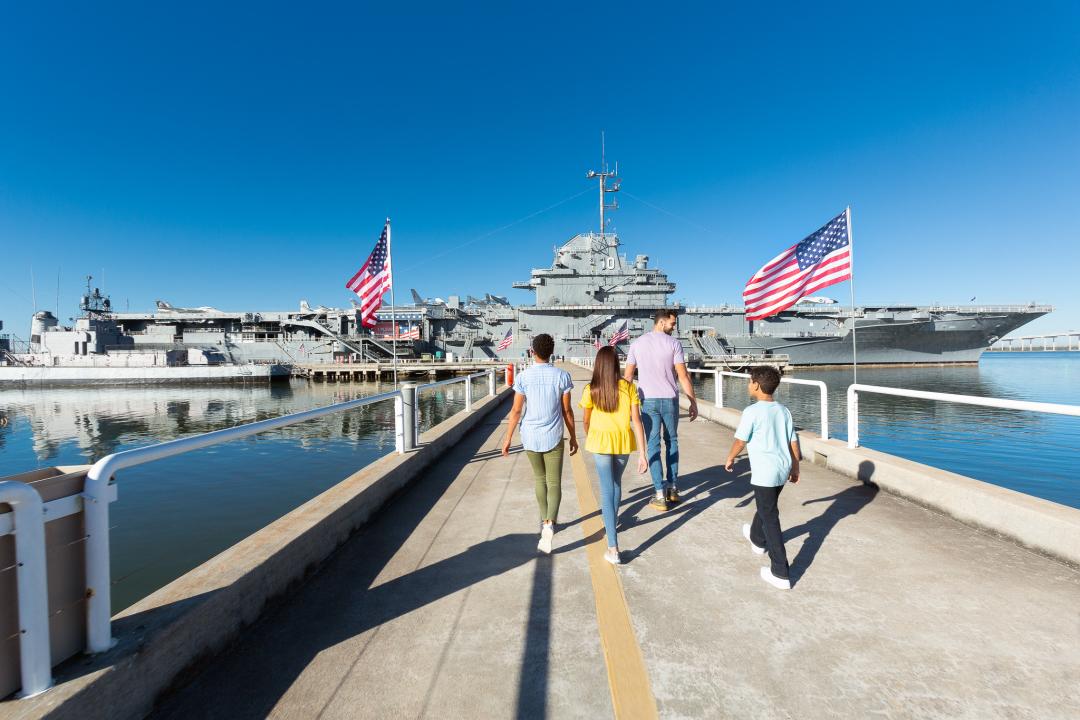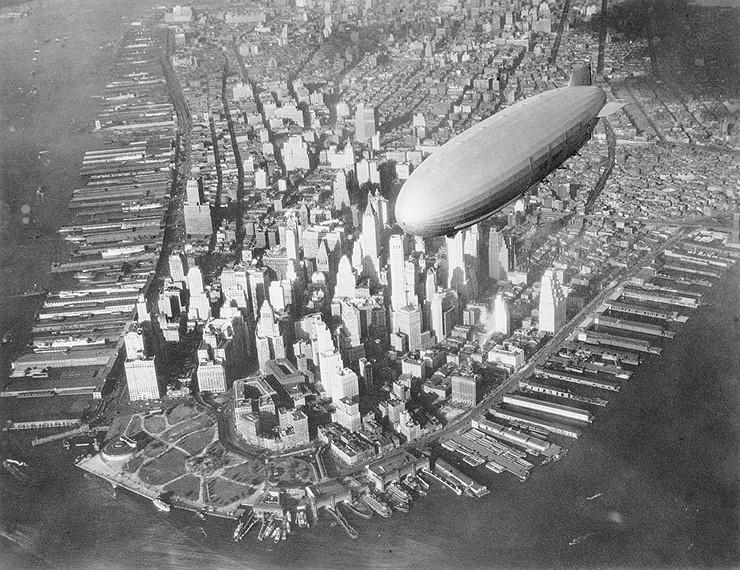
USS Akron was commissioned at Naval Air Station Lakehurst, New Jersey, on 27 October 1931. She was 785 feet in length and weighed 242,356 pounds. The ZRS-4 was built in 1931 in the largest hangar in the world. The designation, ZRS, was used by the Navy to distinguish ships or aircraft as to type and mission – Z- for Zeppelin airship, R – for reconnaissance, and S – for scouting, there were four scout aircraft carried by Akron.
The giant rigid dirigible was 785 feet long, and boasted 6,500,000 cubic feet of inflammable helium in 11 gas cells. Instead of external engine pods, the 8 gasoline engines were set inside the hull with the propellers mounted on variable pitched outriggers. Akron was powered by eight 560 horsepower Maybach 12-cylinder V-type water-cooled engines, mounted inside the hull and driving their propellers via extension shafts. Her fastest airspeed was 75.6 knots and maximum range was 5940 nautical miles at 55 knots speed.
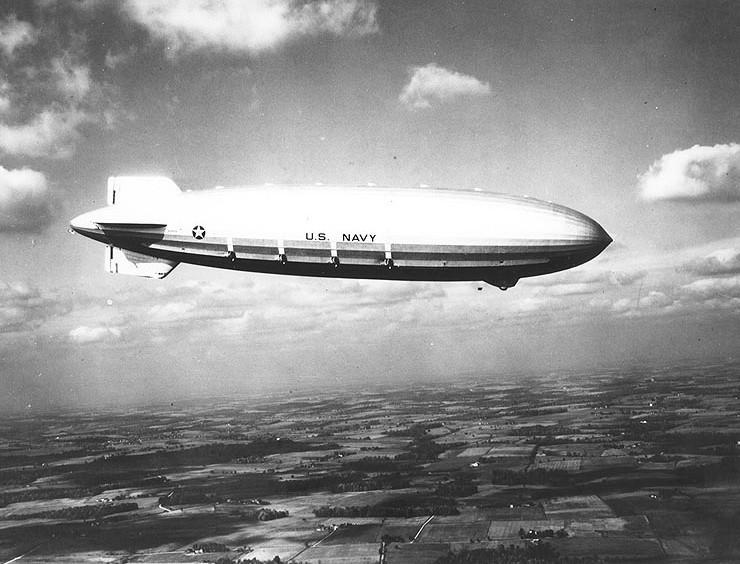
Akron’s crew consisted of 10 officers and 50 enlisted men, plus a heavier-than-air group of 4 officers and 15 airplane mechanics. Her air group contained four Curtiss F9C-2 "Sparrowhawk" fighters, launched and recovered via a mechanical trapeze extended below the airship's hangar compartment.
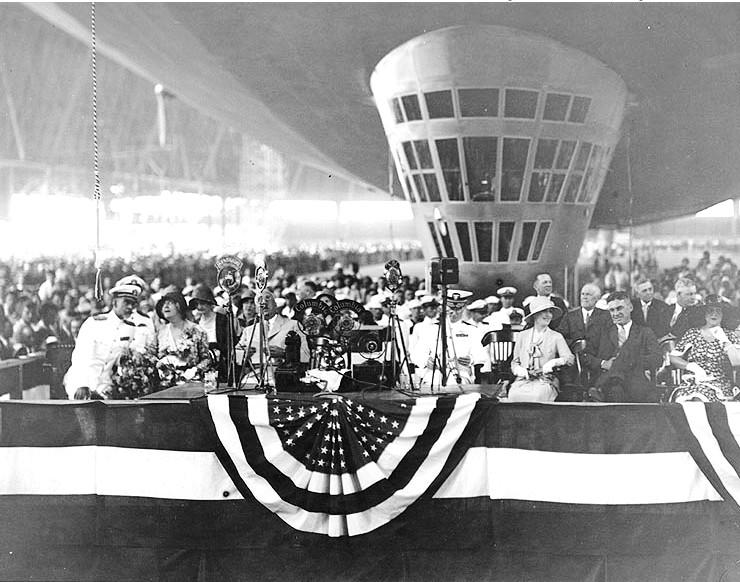
On 08 August 1931 the ZRS-4 was christened Akron, but within weeks became more popularly known as the "Queen of the Skies." During the next 2 years she made 58 successful. flights, crossing the country many times. People were awed by her size, beauty, and streamlined profile. The Navy was proud too have such a ship, and made no pretense of showing her off.
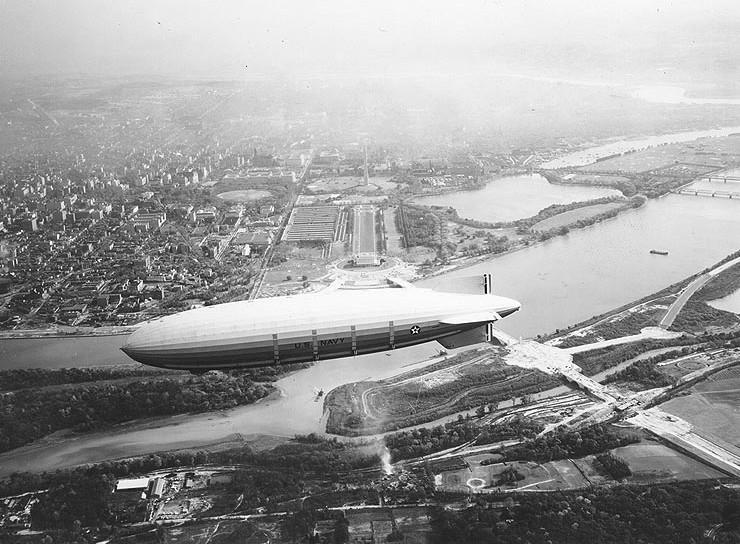
The pilots earned their pay as they had to fly their aircraft on to and off of sky hooks on a trapeze beneath the Akron, as seen below. Interestingly, aircraft had tail hooks for ships, and sky hooks (on top of the wing and above the propeller arc) for airships.
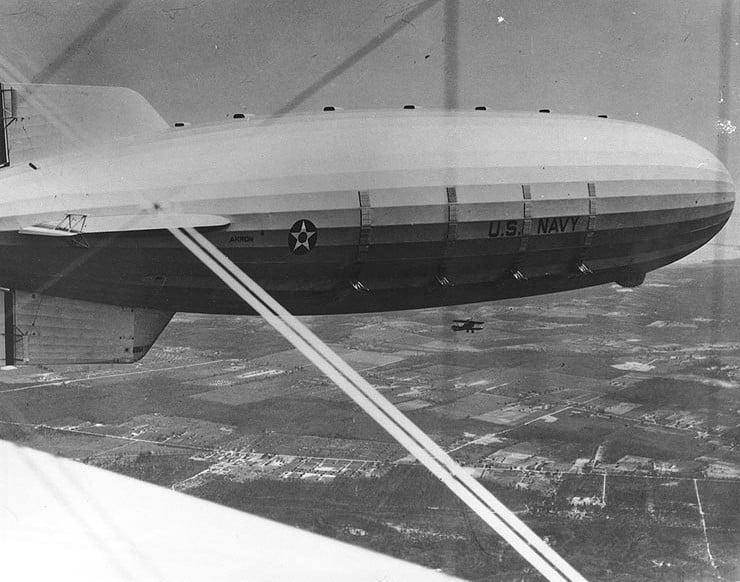
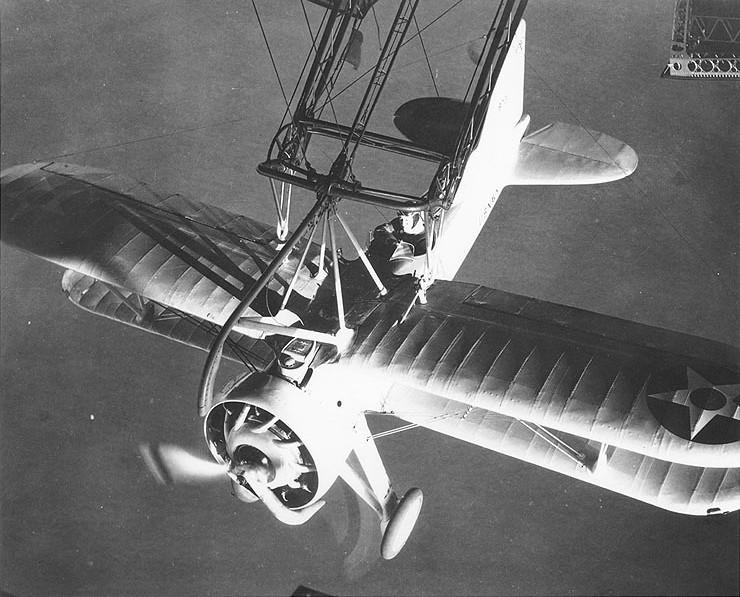
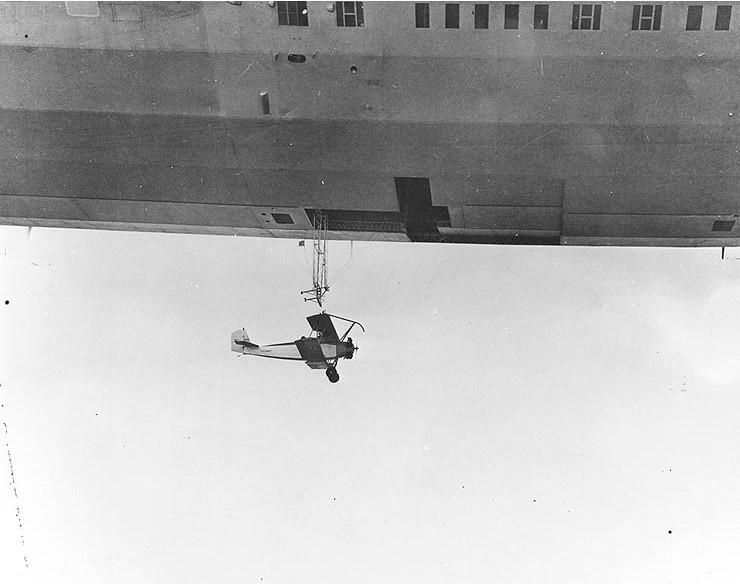
Akron unfortunately had a short career when she crashed in a thunderstorm shortly after midnight on 04 April 1933. Only three out of her crew of seventy-six survived the crash, which included the highest ranking aviator and Head of the Naval Bureau of Aeronautics, RADM William Adger Moffett. Born in Charleston, South Carolina and a Medal of Honor recipient, Moffett is known as the Father of Naval Aviation and we'll take an in-depth look at him on Halloween.
